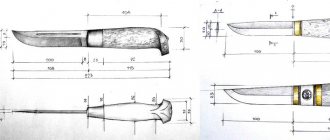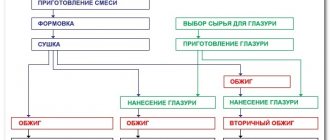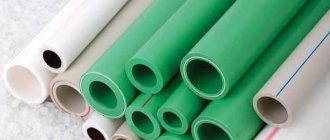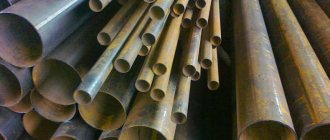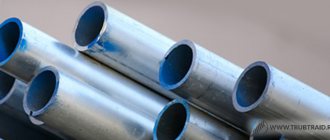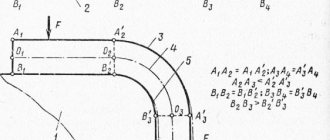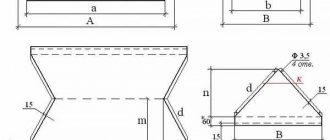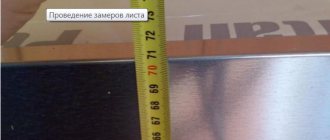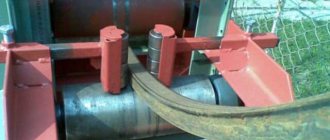Nowadays, sandwich pipes have gained the most popularity when arranging gas ducts. They have excellent performance characteristics. Therefore, these designs are in great demand.
The production of sandwich pipes for chimneys is a profitable business. In this article we will analyze the main aspects associated with the manufacture of these products.
Organizational aspects
To begin production of the products in question, it is necessary to select a good premises for production. Its area must be at least fifty square meters. In such an area you can compactly place the necessary equipment.
It is important that the air temperature in such a workshop is not lower than eighteen degrees. Equipment for the production of sandwich pipes will largely coincide with that used for the production of air ducts and ventilation ducts.
Welding machine
To open a business you must have:
- welding machine;
- folding machine;
- mobile walk-through sheet bender;
- folding machine;
- equipment for rolling stiffeners;
- machine for cutting rolled metal.
Smoke exhaust ducts are joined using corrugated elbows. Therefore, it is wise to purchase equipment to make these fittings.
This machine comes in two types: semi-automatic and automatic. In the first case, your employee will have to manually reinstall the workpiece and restart the equipment.
Production Features
The polypropylene pipe market accounts for approximately 1/5 of the volume of cross-linked polyethylene pipe blanks sold. This does not mean that polypropylene is inferior to PE in a number of criteria. On the contrary, polypropylene pipes are of much higher quality than their counterparts made from cross-linked x-polyethylene.
The only negative is that raw materials and equipment for production are more expensive and require more advanced technologies and trained personnel.
Today, almost the entire market of polymer pipes is flooded with cheap polyethylene blanks made in China, partly in Europe. As the production of polypropylene materials increases, the demand for PE will be predicted to fall, even “collapse.” The price of communications made of polypropylene, as production volumes increase, will come close to the level of products made of PE.
The business in the production of polypropylene pipe blanks is interesting because it is focused on the overhaul of existing communications, water supply, gas, heating, and hot water supply systems. This part of the market is only growing as the housing stock ages.
You can learn more about the installation of polypropylene pipes on our website.
Cutting machines
To manufacture steel products, it is necessary to trim it. For this purpose, laser machines or guillotines are most often used. For small production, the latter option is more preferable. Their prices are affordable. Plus, they take up little space.
To operate a manual guillotine, you do not need to connect to an electrical outlet. The device works through the use of physical force. It is convenient for cutting sheets up to 1.5 mm thick.
A good choice would be a pneumatic guillotine model. Such devices are equipped with a special pneumatic drive. If you are switching to mass production of sandwich pipes, it would be wise to purchase a mechanical model. Electric analogues are suitable for working with sheets whose thickness does not exceed ten millimeters.
Mechanical models are characterized by certain functionality that makes it easier to perform production tasks.
A good guillotine should have:
- control over hydraulic clamps;
- conveyor for receiving finished products;
- complex of support.
Most models have a capacity of 5 sheets/hour. The difference between them lies only in the thickness of the cut sheets.
What are specialized products and what types do they come in?
Profile pipes are manufactured for the assembly of metal structures of various sizes and purposes: frames, hangars, temporary and permanent greenhouses. Standard rolled metal with a round cross-section is not suitable for such purposes, just as profile pipes for water and gas pipelines are not suitable.
To ensure the feasibility of producing profile pipes, it is worth familiarizing yourself with the wide list of areas of application of these products:
- profile pipes of standard configuration. The scope of use has expanded to the construction of scaffolding, pipelines, protection of cable equipment, formation of irrigation systems or fencing.
- main profiles. They are used in the construction of large-sized pipelines with frequent pressure drops as support segments (these pipes are most often manufactured according to the manufacturer’s specifications and for individual orders).
- profile rolled metal with increased resistance to chemical compounds. In demand in the food, pharmaceutical and chemical industries.
- mechanical engineering profiles. They are used in the production of automobile pistons, shafts, cylinders, and bearings.
The types of sections of profile products are also different. It can be oval, flat-oval, square, rectangular, polygonal. On a separate order, the company may be able to produce profiles with a cross-section in the shape of a triangle, hexagon, etc.
In the construction industry, square and rectangular pipes are in demand
There are several ways to make profiles. Depending on the production method used, the properties of the product will differ:
- Seamless hot-rolled profile products: used in environments that require increased strength. Usually anti-corrosion, resistant to any aggressive acids and substances.
- Cold-rolled profiles or standard ones: more elastic structures that can withstand significant pressure changes.
- Cold-rolled electric-welded profiles: strong and durable structures, but only if operating standards are observed.
Mass production of pipes for various purposes requires adjustments in the list of required equipment. Below is a diagram for the production of standard profile pipes, which should be varied in accordance with the developed business plan.
Rolling of stiffeners
To strengthen the design of products, you need to use special machines to create stiffeners. The process is carried out by bending the walls of the seal in increments of about twenty centimeters.
Such equipment includes two components that guarantee an even profile: a forming device and a welded bed. The first part most often looks like rollers with rollers.
The creation of stiffeners occurs simultaneously along the entire length. The key feature of this equipment is that the workpiece being processed is not subject to deformation.
What equipment is used to produce products?
What is the cost of a pipe making line?
A standard line for the production of polypropylene pipes in a budget version includes 10-12 technological units for various purposes. It costs at least 250-300 thousand rubles. Modern lines for automated production of polypropylene pipes cost between 1900-2500 thousand rubles, but this is already a guarantee of quality and sustainable production of products.
The minimum configuration line consists of the following units:
- heating chamber with raw material receiving hopper. Usually this is a container made of corrosion-resistant steel with thermal insulation of the walls, with a gas or electric heater;
- extruder with replaceable die block. A screw is used to create pressure. If several components are used in the recipe, then a disk blower is used;
- a device for transporting unhardened pipe blanks to the cooling and calibration zone. Several Teflon-coated conical rollers rotate to push the hot workpiece into the cooling zone;
- closed-type water baths - most often these are horizontal cylindrical containers with inlet and outlet openings closed with insulating glands;
- automatic pipe cutting into standard lengths - high-speed carbide-tipped disk with cooling of the cutting line;
- vacuum calibration container or roller calibrator;
- marking apparatus - a shaft coaxial to the pipe with a replaceable stamp and a disk that applies longitudinal stripes of a certain color;
- blank packer – forms packages from pipes;
- conveyor for loading;
- stock.
Typically, one thread of a polypropylene blank is rolled into a spool weighing no more than 1200 kg. The holes are closed with plugs, and the material itself is covered with PVC film.
Large-diameter blanks are cut into 5 m pieces and placed in bundles. The total shelf life of products in the warehouse is no more than a year, with a shelf life of 2 years. Information about the date of manufacture and batch must be placed on the pipe along with the markings.
Polypropylene, both in granules and in the form of finished products, decomposes under the influence of ultraviolet radiation, so the storage location of the material must be protected from sunlight, direct rays of halogen or mercury lamps.
The second production problem is air humidity. The production of polypropylene pipes is adjusted to a certain water vapor content. Any deviation from the norm leads to the appearance of cavities, fistulas, and streaks. Therefore, the premises for the production of polypropylene blanks are equipped with a ventilation system.
Folding machines
The folding method is much more practical for joining metal parts than welding or adhesive.
The key purpose of the machine in question is to create a perfectly smooth joint between several components. This equipment allows you to create various types of connections. Including double and single.
Folding machine
The operating principle of the device is quite simple. The forming part pulls the metal sheet along the equipment. This produces double-type folds. They allow you to create a reliable locking connection between two parts.
When choosing this technique, you need to clearly know what thickness of metal you will have to work with. Mobile types of units are characterized by simple maintenance.
There are models in which it is possible to change the settings of the profiling rollers. They allow you to create connecting elements and slats. The functionality of the equipment is reflected in its price.
Manual folding machines are designed to work with stainless steel sheets up to 0.7 mm. To produce sandwich pipes, it is necessary to use more powerful models that allow processing structures not only made of stainless steel, but also galvanized and copper.
To bend the fold, folding machines are used. It is advisable to select equipment with an electric drive. Such models have twice the productivity of manual counterparts. Using this machine you can produce up to a thousand workpieces in one shift.
Profitability of plastic pipe production
Calculation of production profitability will be considered using the example of manufacturing PVC pipes 50 * 1.8 mm, weighing one meter - 0.6 kg.
There are many sizes of PVC pipes and fittings
The technical capability of the line is production of 80 kg/h, which is 133 m3/h. Provided that the equipment is fully loaded, 95,760 m3 will be produced per month. This will require 34 tons of raw materials, the price per 1 kg will be 44 rubles (SG-5 brand, China), which for the monthly norm will be 1,496,000 rubles. The salary for four workers, two per shift, will be 70 thousand rubles. Products can be sold at a price of 50 rubles per 1 m2 - with full sales of monthly output, the revenue will be 2,300,000 rubles - net profit - 750 thousand rubles. This amount will be reduced by the amount of rental premises, utility bills, transport and organizational expenses - approximately 200 thousand. There remain 550 thousand rubles, which will cover capital investments monthly. With a starting capital of 4,500,000 rubles for the purchase of a line for the production of plastic pipes, the payback period will be 12-18 months. To do this, it will be necessary to ensure full sales of finished products, and it is better to work on pre-orders, then there will be no excess production.
Mobile sheet bending machine
This technique must be chosen especially carefully.
Pay attention to points such as:
- Power indicator.
- Price.
It is important that the equipment has a good power reserve. Otherwise, the equipment may quickly fail under constant operation conditions.
Look for a model that can handle sheets that are thirty percent or more thicker than you actually need. The price of units depends on their category.
The equipment in question can be of the following types:
- hydraulic;
- electromechanical;
- manual.
The latest version of the technology does not have a mechanical drive. It comes in two types: stationary and mobile. For the production of sandwich pipes for chimneys, it is better to use a mobile version. There are models equipped with cutting blades. They make it possible to use equipment both for bending workpieces and for cutting them.
Hydraulic and electromechanical options are characterized by high cost. But without them it is impossible to create mass production. The simplest models of this type are suitable for processing steel sheets from 1 to 1.5 mm. More powerful analogs are used to work with workpieces with a thickness of up to twenty millimeters.
Machine tools are often equipped with a CNC complex. For a small business, purchasing this equipment is quite expensive. The average price of such systems is about eighteen thousand dollars. In addition, highly qualified personnel are needed to operate such a machine.
Main characteristics of plastic pipes
Polyvinyl chloride (PVC) pipes today are widely used in various sectors of the economy, mostly, of course, in construction. This type of pipe has replaced metal pipes and is increasingly pushing them out of the market. It is not surprising that today more and more people are investing in the development of this business. The main cost item is the line for the production of plastic pipes, but high productivity and low cost of consumables quickly pay for the investment.
Plastic pipes are suitable for: water supply, sewerage and heating
The high demand for plastic pipes is due to a number of distinctive characteristics:
- they are not subject to corrosion;
- lightweight – 5-7 times lighter than metal analogues;
- not affected by high and low temperatures;
- limescale is not deposited on them;
- long service life - up to 50 years;
- they do not affect the taste of the water.
Such quality advantages allow the use of pipes in heating and sewer systems, water supply and gas systems.
Folding machines
These units are used for the purpose of upsetting the seam in the manufacture of hollow cylindrical parts. There are models operating both manually and electrically. You should choose a machine whose pressing rollers are made of high-quality hardened steel. In the electromechanical version of the equipment, the clamping level is usually adjustable. This type of technology is quite diverse.
The difference between the models is:
- cost;
- productivity;
- the length of the folded seam;
- installation method;
- type of drive for moving the forming part.
Equipment with the same rebate lock length is characterized by an almost identical level of performance. The units under consideration allow processing up to fifty elements per hour.
Important Details
Basalt or stone wool should be used as insulation. Use quality material if you want your products to have a good reputation. The fastening of two pipes of different diameters must be reliable. It is not enough to insert one element into another and fill the space between them with insulation.
Product Installation
Also, to produce sandwich pipes for chimneys, you need to use special software to design the products. If the workshop is well equipped and the work process is properly organized, then up to 500 finished products can be produced in one work shift.
Watch the video:
